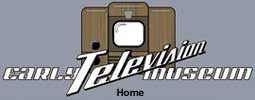 |
 |
CHRONICLE OF RADIOVISION
First official TV show in France
April 26, 1935
Extract from the article by Paul Berché. Journal Antenne No. 632, May 5, 1935
 |
 |
CHRONICLE OF RADIOVISION
First official TV show in France
April 26, 1935
Extract from the article by Paul Berché. Journal Antenne No. 632, May 5, 1935
AN INAUGURATION.
On friday, April 26, between 8:15 pm and 8:30 pm, it was very difficult to cross the threshold of 103 rue de Grenelle. There were many people here to see the sensational spectacle that was about to happen in the ministry: the first official French television program.
I, though summoned by a telephone call from the minister's office, had the same difficulty of penetrating the sanctuary, and without my friend Ponchon, an old habitué of the house, who had two barriers in front, remained on the pavement of the Rue de Grenelle, to contemplate the walls behind which something was going on.
I was not the only "guest" to have encountered difficulties in responding to the "invitation" that had been made to them. Certain vigorous and pitiful protests of some photographers, make me think that such a misadventure did not come to me alone.
But the welcome which M. Barthelemy, the hero of the day, wished to reserve for me, quickly made me forget these incidents, due to an evident lack of organization. M. Barthelemy is an old friend of the Antenna, and all my readers know that it is his methods and apparatus which are used by the T.T. for the television programs decided by Mr Mandel.
After letting me watch Miss Béatrice Bretty smile from her blackened lips (to satisfy the requirements of the photoelectric cell), in front of the device of exploration, and this same smile reproduce on the screen of the cathode ray tube of the receiver of Mr. Barthelemy, who took me to the room where the television transmitter itself had been installed.
Some large pieces of furniture with panels of bakelite, enclosed in an immense faraday cage made of copper trellis, constituted the transmitter assembly responsible for creating in the antenna the modulated current of 4 amps of broadband signal. Within a radius of 100 kilometers, moving images could be received at a wavelength of 175 meters.
The image obtained at the control receiver was remarkably clear, although the scan was only 60 lines. I recall in this connection that the English Television Committee, in a recent report, stated that 240 lines were necessary for perfect reproduction.
But the first official tests of Mr. Barthelemy prove that such a high definition is not indispensable for conveying something worthy of consideration. They will attempt the transmission of scenes of several characters and in particular the transmission of dances.
Will the hectic and photogenic girls take over the severe ministry of Mr. Mandel? Within three months, the definition will be extended to 180 lines..
I congratulate Mr. Barthélemy very warmly and most sincerely on his achievement, especially as it was carried out under truly amazing speed conditions. Judge it. The installation was decided on April 16 and a conference room of the Ecole Supérieure des P.T.T. Is placed on the hour at the disposal of M. Barthelemy. Mr. Mandel makes quick decisions and likes them to be executed at the same pace.
On the 17th, the amphitheater's bleachers were removed and the future studio was stormed by masons, carpenters and electricians. The same day, in a nearby room hastily dismantled, begins to rise the installation of the transmitter: 500 watts - 175 meters - which is provided by the powerful Compagnie des Compteurs de Montrouge.
On the 20th, most equipment is in place. Easter Sunday and Monday are used to make the first adjustments. On the following days, until the 25th, they finished the "acoustic" coating of the studio and the laying of the cables. On Friday the 26th, the first officially televised scenes were broadcast from this new studio.
This rapidity of execution is a testament to the skill of the staff: one can say that, from now on television has left the field of the laboratory. So you will not be surprised to learn that, on Friday evening, M. Barthelemy confided to me that he felt a little fatigued.
But I am sure that the official consecration of his long research has largely rewarded the great master of French Television with his recent or distant pains and encouraged him not to spare his future punishments, as he does, believe the good, the firm intention.
What should we think of these first programs? We have already objected to the choice of wavelength but this must be regarded as mere details.
Indeed, it is possible to counter these objections, that the receiving equipment for 60 lines is quite simple, that the range of the waves of 175 meters is much higher than that of the waves of 7 meters used in Germany and which enter In the category of quasi-luminous waves, that the true quality of the 60-line scenes is unknown to most of those who disapprove of it, and that this kind of program intended for a relatively distant viewers, does not prevent simultaneous high-definition transmission over very short waves.
And now, my dear readers, you have only to "see" after so long only "hearing"
Paul BERCHE.
L'Antenne, May 5, 1935.
Comment :
The 60-line broadcasts were in fact only received on a very limited number of receivers (about 20 in total), the television sets being not manufactured at the industrial level at the time. These were mostly amateur assemblies made from specialized "kits".